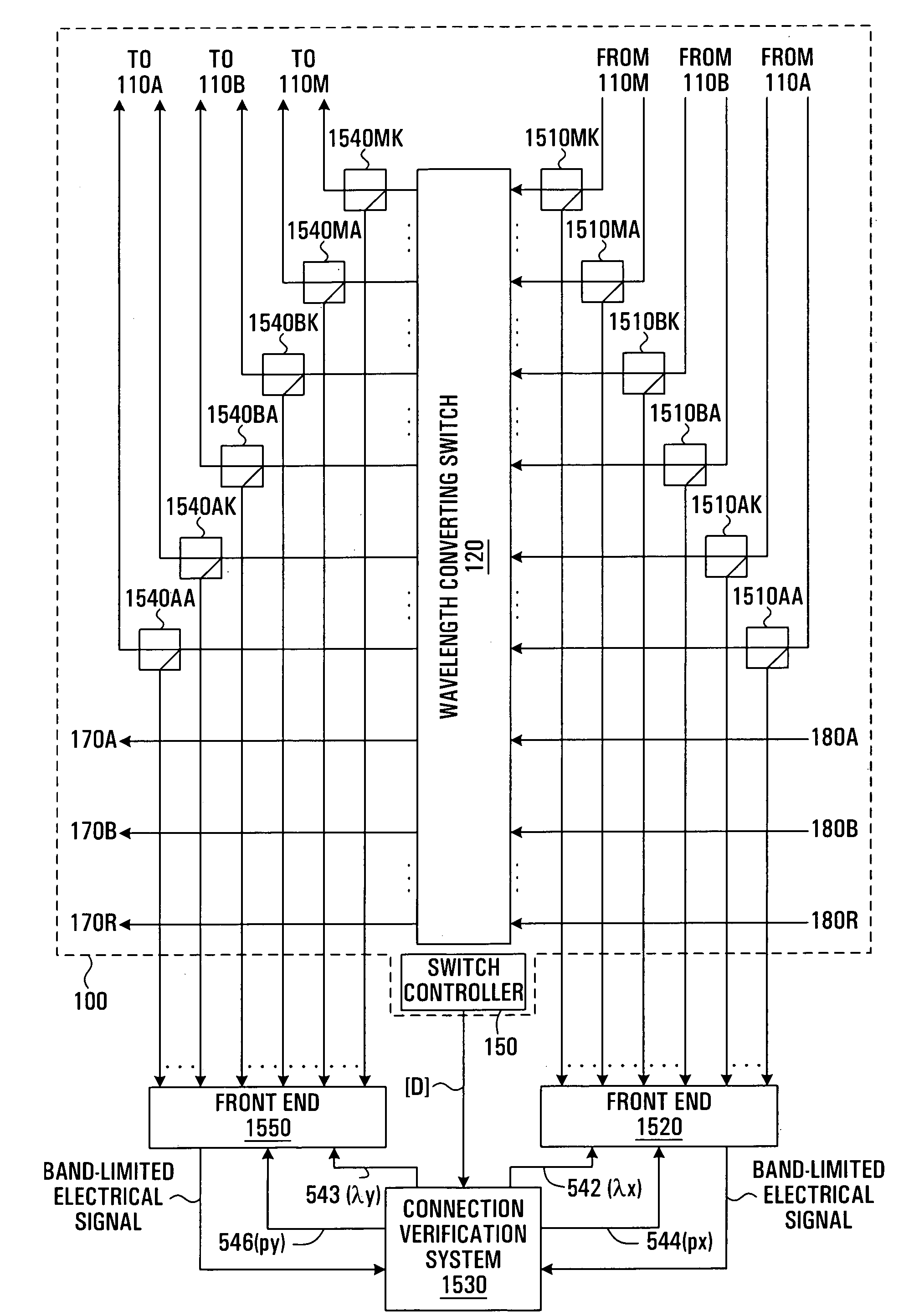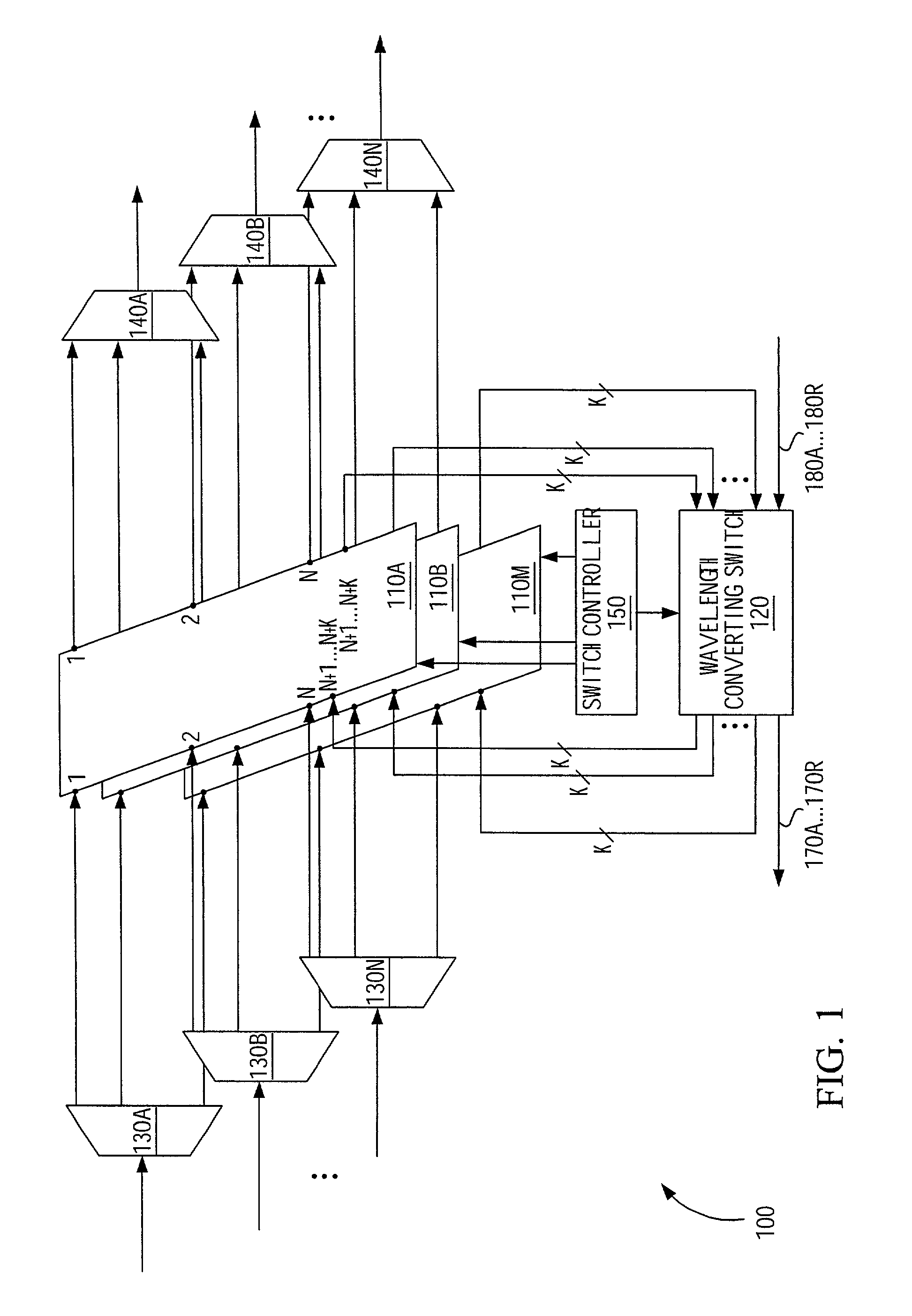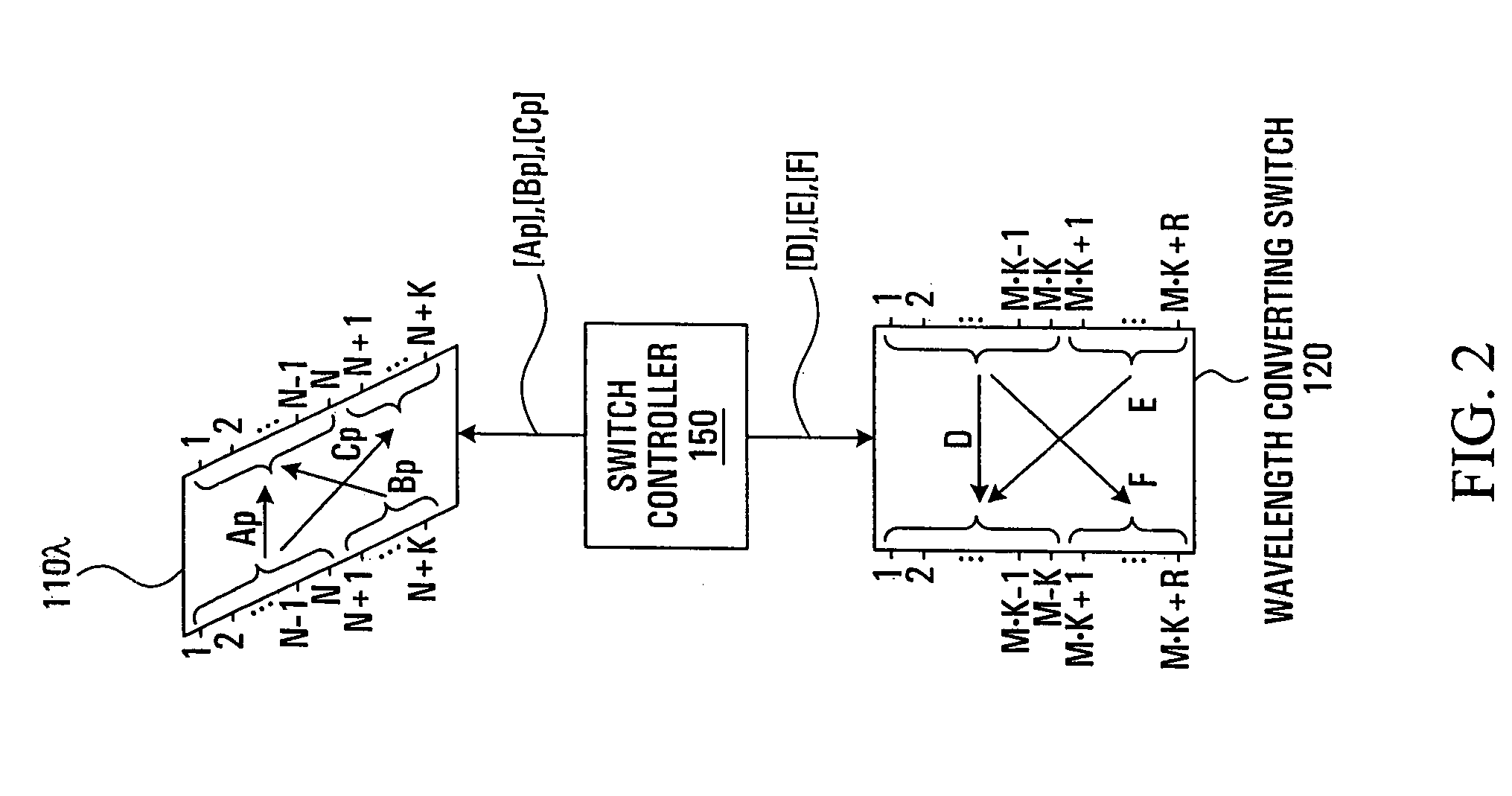Connection verification for optical switches
a technology of optical switches and connection verification, applied in the field of optical switches, can solve the problems of human error, severe negative impact on service quality, and the probability with which errors can be made when switching individual optical signals
- Summary
- Abstract
- Description
- Claims
- Application Information
AI Technical Summary
Benefits of technology
Problems solved by technology
Method used
Image
Examples
Embodiment Construction
[0032]As will be described in further detail herein below, the connection verification system of the present invention correlates the low-frequency content of a set of input single-carrier optical signals with the low-frequency content of a set of switched single-carrier optical signals. For best performance of the connection verification system, the low-frequency content (representing the first, say, 10–100 MHz of signal spectrum, depending on the design) of the various input signals arriving at the switch should be sufficiently unique and / or randomized so that the cross-correlation of the low-frequency content of any pair of distinct input signals is relatively weak compared to each signal's auto-correlation. This condition is met for most forms of scrambled binary information transmission including those commonly in use with existing fiber systems, such as SONET, SDH, PDH, Gigabit Ethernet, 10GE, as well as direct IP-over-wavelength, and wavelength-wrapper-encapsulated signals.
[0...
PUM
 Login to View More
Login to View More Abstract
Description
Claims
Application Information
 Login to View More
Login to View More - R&D
- Intellectual Property
- Life Sciences
- Materials
- Tech Scout
- Unparalleled Data Quality
- Higher Quality Content
- 60% Fewer Hallucinations
Browse by: Latest US Patents, China's latest patents, Technical Efficacy Thesaurus, Application Domain, Technology Topic, Popular Technical Reports.
© 2025 PatSnap. All rights reserved.Legal|Privacy policy|Modern Slavery Act Transparency Statement|Sitemap|About US| Contact US: help@patsnap.com



